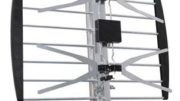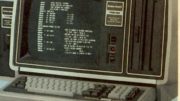Believe it or not — and you probably believe it — I get questions like this all the time. In real life people actually walk up to me and just ask them. Sure, they’re people I already know. I know I’m not some sort of real-life celebrity.
So let’s get down to business.
Carrier-to-noise ratio
Carrier-to-noise ratio, or CNR, is the proportion of how much “raw signal” you have vs. how much noise. This measurement is very easy to get, all you have to do is find a carrier wave and then measure its strength. You can also measure the strength of adjacent frequencies to get the noise level without the carrier wave, although modern meters can measure both on the same frequency.
CNR is important because it gives you a raw measurement of how well things are going to travel over a wire. When you amplify a signal, the carrier goes up by a certain amount (the amplifier’s rated number) and the noise goes up by a generally smaller amount (the amplifier’s noise figure.) Because the carrier will get weaker and weaker as it travels through copper cable, a strong carrier is important and that’s the idea behind a preamplifier.
As the name suggests this is a ratio and is measured in dB. Higher is better.
Signal-to-noise ratio
This is a much more important measurement of digital signals and is derived by actually tuning the signal and determining how much of it is total rubbish. Digital signals are highly redundant. That means you can lose a lot of signal and still have a usable TV picture. SNR tells you how much more usable signal you have than non-usable signal.
SNR does not generally go up when you amplify because with digital signals you can either decode it you or you can’t. Having a stronger signal doesn’t really help you to decode something that isn’t there. The key with SNR is that it is strong at the antenna and that it doesn’t get any weaker once you get to the television. If SNR is going down, that means the signal itself is getting harder and harder to decode and eventually it won’t be usable.
What causes bad CNR and SNR?
CNR drops as you get further away from the towers or if the signal is blocked. SNR also drops the same way but is affected by electromagnetic interference as well. What’s important to realize here is that once your SNR goes down, it’s very hard to boost it back up effectively. That’s because you never really eliminate noise. The best you can do is try to amplify the good parts without amplifying the bad parts too much.
What is a good number for CNR and SNR?
Our friends at Televes suggest 25dB as a good CNR and SNR. This means the proportion of carrier or signal to noise is roughly 316 to 1. However this is a really strict number and it’s based on the TV antenna feeding multiple homes so it really has to be reliable.
When it comes to CNR, if it drops below about 18dB then you can add an amplifier. This will pump it back up which will help you get a longer cable run. With SNR you can’t pump that number up other than reprocessing the signal. The good news is that I’ve seen SNR as low as 15dB (only a 31:1 ratio). Believe it or not the TV still works most of the time.
Amplifiers aren’t a catch-all solution for signal problems, but they can help you in some cases. If you’re interested in an amplifier, shop at Solid Signal for the best selection. If you’d like help choosing the right amplifier, call us at 888-233-7563 or fill out the form below.





